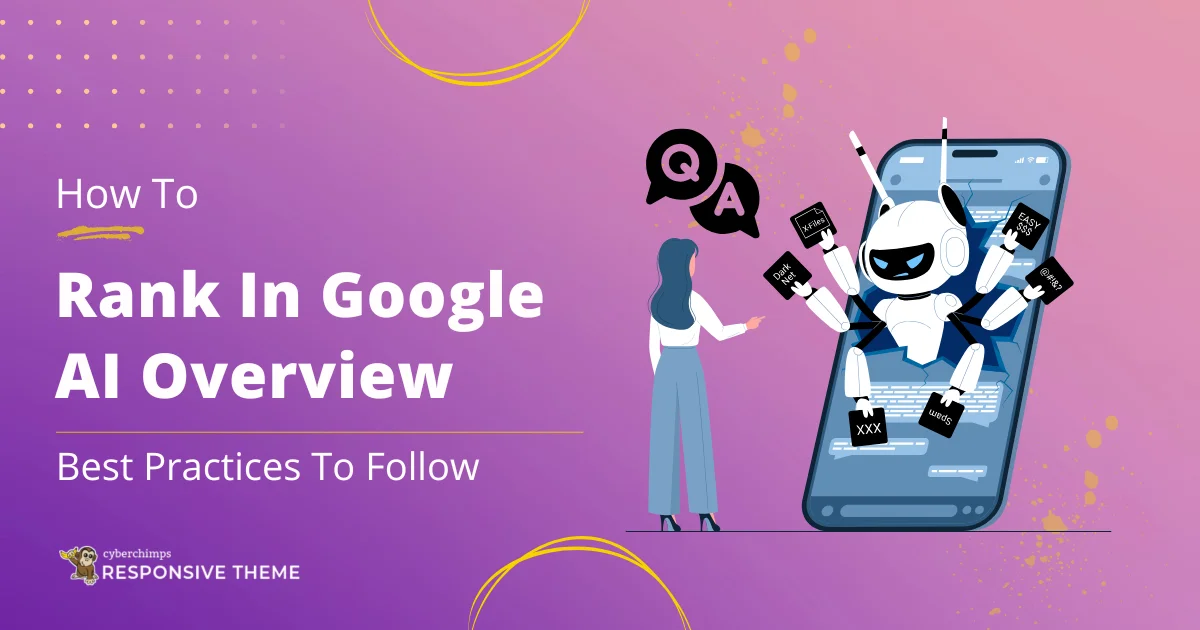Want to learn how to make your content rank in AI Overview?
Going through this guide will help you get covered!
Since the beginning of this decade, transitional developments on and around AI have been among the most popular trends worldwide. Given the growth and development of technologies, things backing different AI developments have come a long way.
Whether small enterprises or tech giants, every business has continuously worked to build with an estimated investment of $250 billion.
With its vast database, Google has always been a top contender in this AI race. While it was not the first or the most accurate to launch its AI-learning model, it has significantly pulled up, especially with its AI overview feature.
While you might have already heard and used it, this article will detail how your business could benefit from the Google AI overview feature.
What is Google AI Overview?
To begin with, let’s first understand what Google AI overview is.

Google AI Overview, also known as Gemini Overview, is Google’s AI-powered search feature designed to provide users with quick, summarized answers directly on the search engine results page (SERP).
AI Overview gathers information from multiple sources instead of solely relying on traditional blue links and summarizes it for users. However, its working process is quite complex.
Let’s break it down into simpler terms.
How Does it Work?
Google AI Overview processes users’ search queries using advanced AI and machine learning models to provide users with quick, relevant, and well-structured answers. It generates a summarized response by extracting key information from multiple sources across the web.

The process begins with Google analyzing the search query to understand user intent. Its AI model breaks down complex and conversational searches, identifying the main topics and subtopics to provide a precise response.
Further, instead of matching keywords, it focuses on context, ensuring the results align with the user’s needs. Once the intent is established, Google scans its vast index of web pages, pulling information from high-quality, authoritative sources.
Using natural language processing (NLP) and machine learning, the AI compiles the extracted data into a cohesive and easy-to-understand summary. This summary is designed to answer the user’s query directly, minimizing the need for further searches.
Although the process may appear long, Google’s algorithms ensure the results are produced in some milli-seconds.
How Can Google AI Overview Benefit Your Business?
Undoubtedly, by now, you must have an idea that this is big.

The AI overview feature can significantly increase your website’s visibility, converting visitors into potential customers. It can help your business in various ways, including:
- Increased Visibility – Ranking in AI Overview places your content at the top of search results, giving your brand more exposure without relying solely on traditional SEO tactics.
- Higher Click-Through Rates (CTR) – When AI cites your website as a source, users are more likely to visit your site for in-depth information, driving organic traffic.
- Enhanced Authority and Trust – Being featured in AI Overview signals credibility, positioning your brand as a trusted industry expert.
- Better User Engagement – Since AI Overview delivers direct answers, users engage more with valuable, well-structured content—leading to better retention and interaction.
- Competitive Edge: Businesses that optimize for AI-driven search stay ahead by adapting to how users now consume information online.
As a young WordPress-powered business, Cyberchimps has been among the primary beneficiaries of AI overview.
Our team has continuously focused on writing user-centric articles and guides, which have established our expertise and helped our content rank in Google’s AI overview.
Based on our experience and learnings, I have compiled a list of factors with examples that helped us benefit from AI overview ranking in Google.
Recent Google Updates and Changes in Website Traffic

If you have had an online presence for a long time, you must have noticed significant fluctuations in your website traffic near the end of 2024.
It was confusing. Some suggested that it happened because of changes in Google’s AI policy, while others said it was a new algorithm change that demoted content detected as ChatGPT or AI-written.
As found, it was due to a “Core Google update” followed by a “Spam Update.” The Internet forums were filled with comments and chaos with its impact.
After days of discussions and research, experts suggested that the core update had a broad impact, making content quality the prime focus and ranking factor.
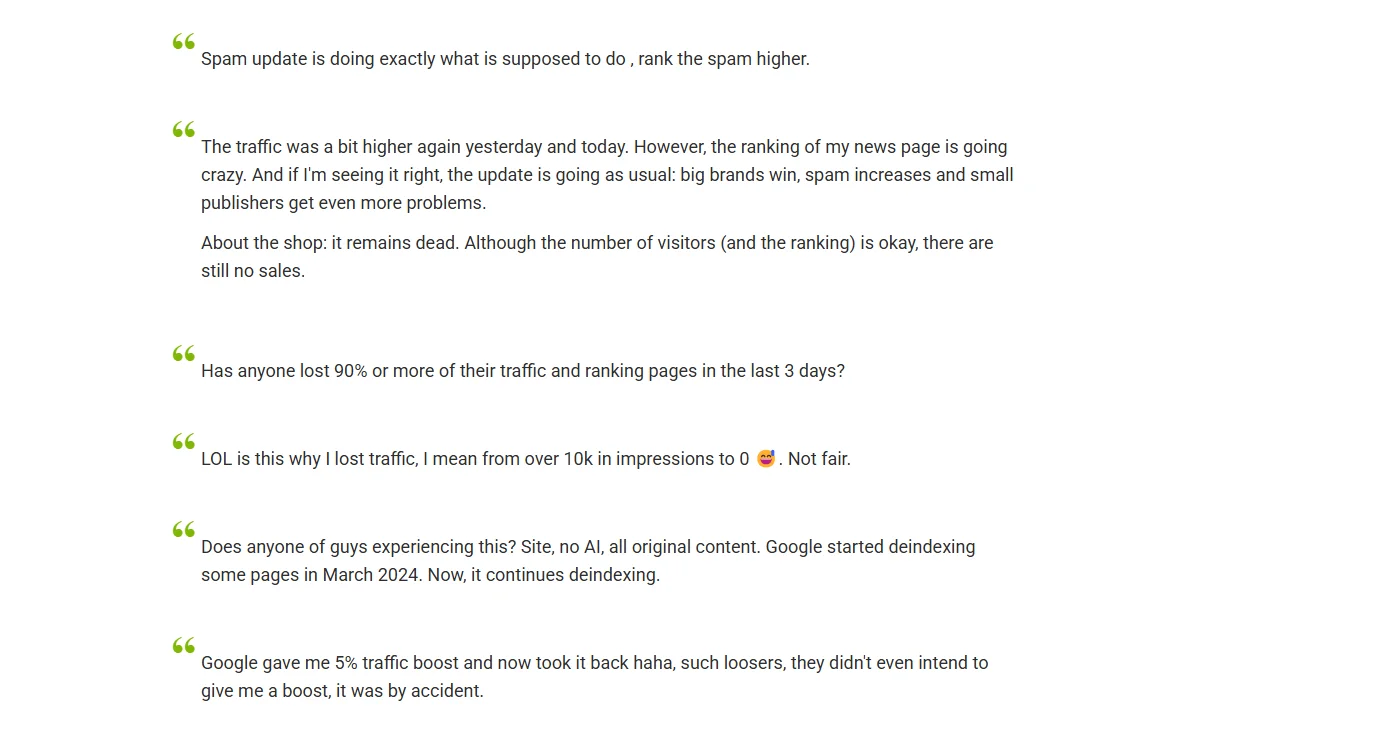
Key Takeaways from the Updates
Over ten million pieces of content are published on the Internet daily in different formats. Undoubtedly, not all can perform well; previously, content ranking was mainly based on SEO and readable parameters, as well as the uniqueness of the content.
However, with the introduction of various AI tools, content generation has seamlessly transitioned. Most websites now use AI to publish content.
Nevertheless, Google already mentioned that it does not penalize if AI writes your website content, but you must ensure it’s just not copy-paste.
What do I mean by that?
Well, Google wants all content published on the web to be unique, authentic, trustworthy, and expert-validated. To ensure this, Google recommends following E-E-A-T.
What is E-E-A-T?

E-E-A-T stands for Experience, Expertise, Authoritativeness, and Trustworthiness. It is a set of quality guidelines Google uses to assess and rank content.
Ensuring your content aligns with these principles increases the chances of ranking in Google AI Overview.
1. Experience
Google prioritizes content that demonstrates firsthand experience. If you’re writing about a product, service, or process, showing direct experience (such as case studies, personal testing, or hands-on reviews) makes your content more valuable and credible.
2. Expertise
It is recommended that individuals with proven knowledge or expertise in the subject matter create content. Google values well-researched and in-depth information written by industry professionals, specialists, or knowledgeable individuals.
3. Authoritativeness
Google assesses whether the website or author is a recognized authority in its field. This is determined by factors such as backlinks from high-quality sites, mentions in reputable publications, and a strong online reputation.
4. Trustworthiness
Your content should be accurate, transparent, and backed by credible sources. Google gives greater trust to websites with secure domains (HTTPS), clear authorship, updated content, and fact-checked information.
How to Optimize Content for E-E-A-T
Next, let’s learn how you should optimize your content based on the E-E-A-T principle:
1. Demonstrate first-hand experience: While writing content for your website, you should share personal insights, cases, or detailed reviews based on act
Based on what we learned while writing for Cyberchimps, we use language in our conversational content and include our personal opinions, thoughts, user thoughts, and stories.
2. Showcase Author Expertise: Include author bios with qualifications, experience, and links to social profiles or industry contributions.
In the first place, to ensure the content written by our author, we ensure that our writers are thoroughly trained and learned with prior experience of writing similar content in the niche.
Expert content always ensures that the content doesn’t just remain generic and has a personal touch with expertise gained over time.
3. Build Authority: You should continuously attempt to earn backlinks from authoritative sources, guest post on reputable sites, and engage in industry discussions.
To build authority for our website, we continuously improve its off-page SEO and rigorously implement backlink strategies on other websites.
One another strategy that can help your business build more authority without effort is to create a unique product or feature for your product.
4. Maintain Trust: Fact-checking content, using reliable sources, and keeping up-to-date information is very important. You should cite references and display a clear privacy policy to ensure transparency.
When we draft and publish content on our website, we ensure that the content we offer users in our articles, guides, or documents is thoroughly fact-checked.
As a responsible brand, we try to deliver the most accurate information to our users. We consistently work to keep our content up to date and make changes according to the latest changes and developments.
Best Practices To Rank In Google AI Overview
Let’s now detail the principles Google considers when optimizing its content to appear in the AI Overview.
1. Create High-Quality, User-Focused Content
Content quality is one of the most prominent factors in ranking in Google AI Overview. Stuffing keywords and churning out generic articles used to be effective methods earlier, but they hardly work now.
The latest Google algorithm prioritizes content that genuinely helps users by answering their queries in the most precise, concise, and valuable way.
But what exactly makes content “high-quality” and “user-focused”? Let’s understand:

Understand User Intent
Before writing anything, it’s essential to step into your audience’s shoes. Ask yourself:
1. What problem are they trying to solve?
2. What kind of information do they expect?
3. Are they looking for a quick answer or an in-depth guide?
Drafting Clear, Concise, and Well-Structured Content
Google favors content that is easy to read and digest. This means:
- Using simple and direct language
- Breaking down complex topics into easy-to-understand sections
- Writing in a conversational tone that feels natural and engaging
Think of it this way: If your content sounds like a professor explaining something to students, you’re on the right track.
Provide Unique and Valuable Insights
Your content will not stand out if it is merely a reworded version of what’s already out there. The focus should be to offer something new.
Sharing personal experiences, expert opinions, or real-world case studies improves credibility and makes your content more engaging and trustworthy.
At Cyberchimps, we always ensure our articles go beyond the basics. Instead of listing WordPress plugins or themes, we test them, compare features, and provide honest insights. This approach helps our content offer genuine value to our users.
Use Visuals to Enhance Understanding
A well-placed image, infographic, or video can significantly improve content quality. Visuals improve readability and help explain complex topics simply.
Google promotes content that is visually structured, so whenever possible, include:
- Screenshots or illustrations
- Infographics summarizing key points
- Short videos demonstrating processes
Keep Content Fresh and Up-to-Date
Outdated content is a big red flag for Google. Your article will struggle to rank if it references old data, discontinued tools, or outdated trends.
At Cyberchimps, we revisit our top-performing articles every few months to refresh statistics, update product recommendations, and ensure all information remains relevant. This practice has helped us maintain our rankings.
2. Use Structured Data and Schema Markup
If you want your content to stand out, structured data and schema markup can significantly help you. These elements help Google understand your content better and increase the chances of your website being featured in AI-generated answers.
What is Structured Data?

Structured data organizes and tags information on your website in a format that search engines can easily understand. It gives Google a roadmap to your content to know exactly what’s on the page.
For example, if you’re publishing a recipe, structured data helps Google recognize details like ingredients, cooking time, calories, and step-by-step instructions
Similarly, for an article, structured data can highlight:
- Author information
- Published Date
- Article Category
- Keywords
What is Schema Markup?
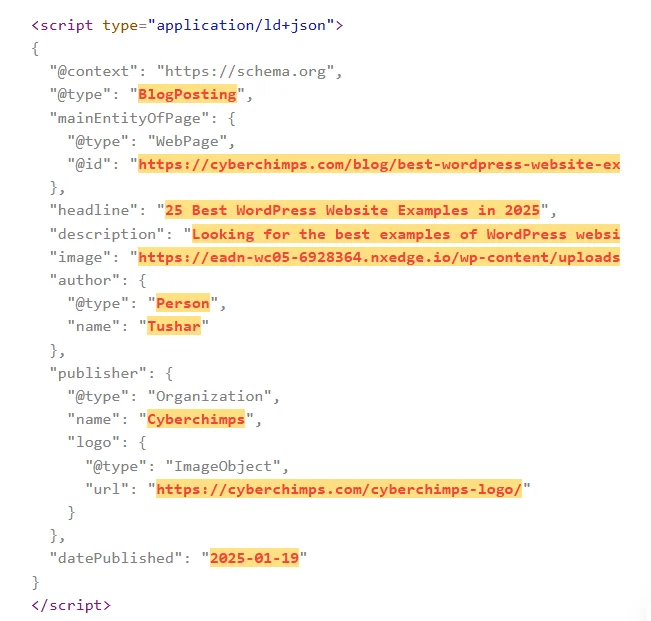
Schema markup is a specific type of structured data that tells Google exactly what content you offer. It’s a code (written in JSON-LD, Microdata, or RDFa) that enhances your content’s appearance in search results.
For example, schema markup can help your page display as featured snippets, FAQs, how-to guides and reviews, and star ratings
How Structured Data and Schema Markup Help Rank in Google AI Overview
- Google AI Overview relies on well-organized and relevant content. Structured data plays a crucial role by:
- Making it easier for AI to extract and summarize key information
- Helping Google identify the most relevant sections of your content
- Increasing the chances of getting featured in AI-powered results
- Enhancing search result appearance, leading to higher click-through rates
3. Improve Page Experience and Core Web Vitals
If you want your content to rank in Google AI Overview, you must optimize your page experience and Core Web Vitals. While high-quality content is crucial, Google also considers how fast, smooth, and user-friendly your website is when determining rankings.
In a generation where users have a goldfish attention span and lack patience, no matter how great your content is, users will leave if your site takes forever to load or is hard to navigate.
What is Page Experience?
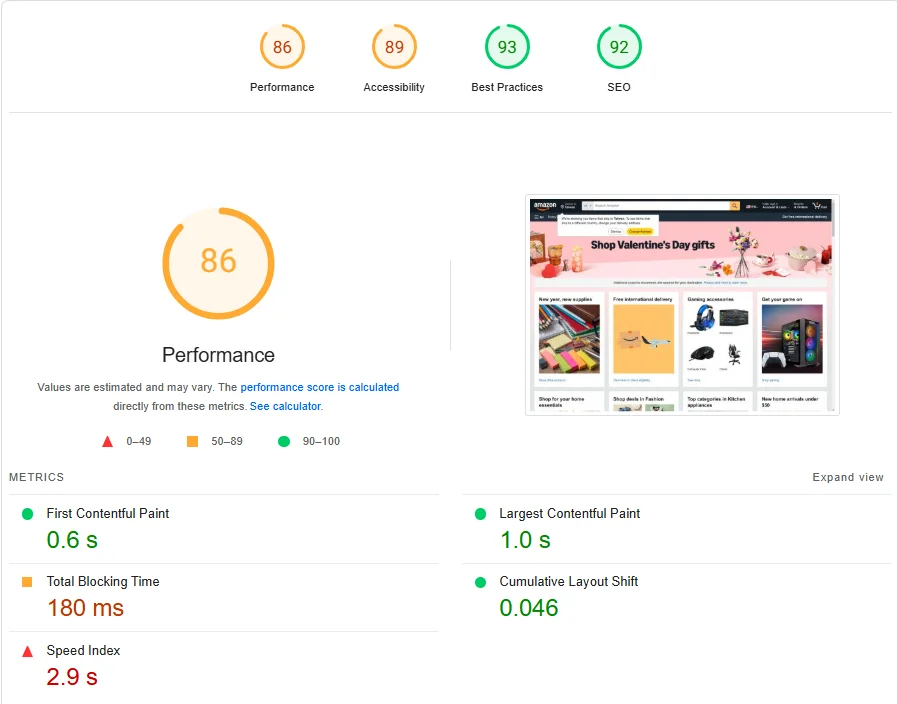
Page experience refers to how users interact with your website. It includes factors like:
- Fast loading times
- Mobile-friendliness
- Secure browsing (HTTPS)
- No intrusive pop-ups
- Smooth navigation
Google prioritizes websites that offer seamless, engaging, and frustration-free experiences, especially for mobile users.
What are Core Web Vitals?
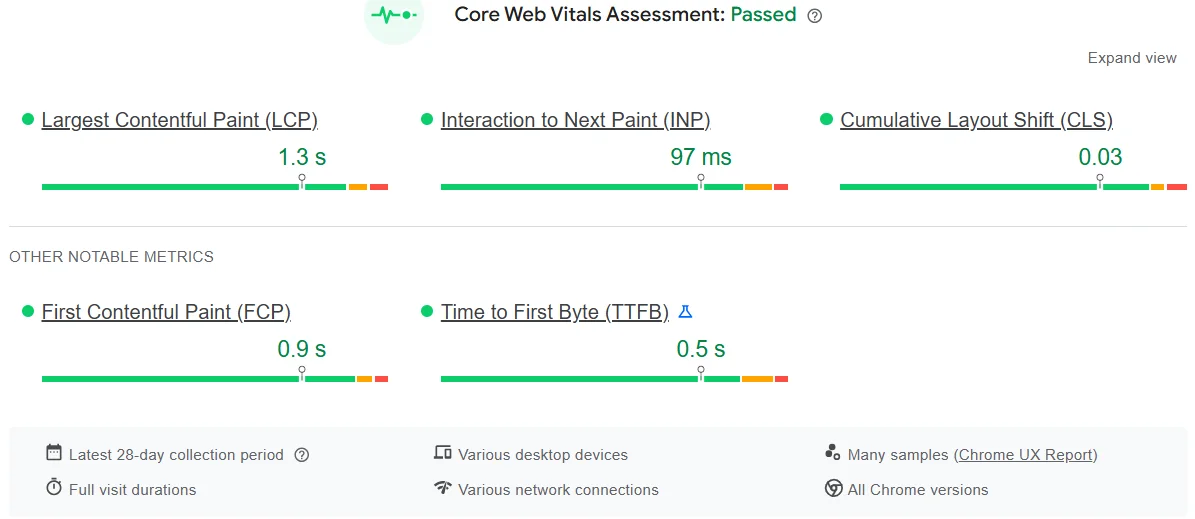
Core Web Vitals are three specific performance metrics Google uses to measure user experience. These focus on:
1. Largest Contentful Paint (LCP) – This measures your site’s loading performance (how quickly the main content appears).
Ideal Score: Under 2.5 seconds
Fix: Optimize images, use lazy loading, and enable browser caching.
2. First Input Delay (FID) – Measures interactivity (how quickly your site responds when a user clicks something).
Ideal Score: Less than 100 milliseconds
Fix: Minimize JavaScript execution and optimize third-party scripts.
3. Cumulative Layout Shift (CLS) – Measures visual stability (how much the page layout shifts unexpectedly).
Ideal Score: Below 0.1 seconds
Fix: Define image sizes, avoid ads shifting content, and use CSS for stable layouts.
Google AI Overview prioritizes results from websites that load fast, are mobile-friendly, and provide a smooth browsing experience. A slow, glitchy website won’t cut—even if the content is excellent.
Recently, we conducted a thorough page experience check and improvement on the Cyberchimps website. The results were better than expected, and after optimizing Core Web Vitals, we noticed a 26% increase in organic traffic. Our pages loaded faster, users stayed longer, and rankings improved, proving that performance matters.
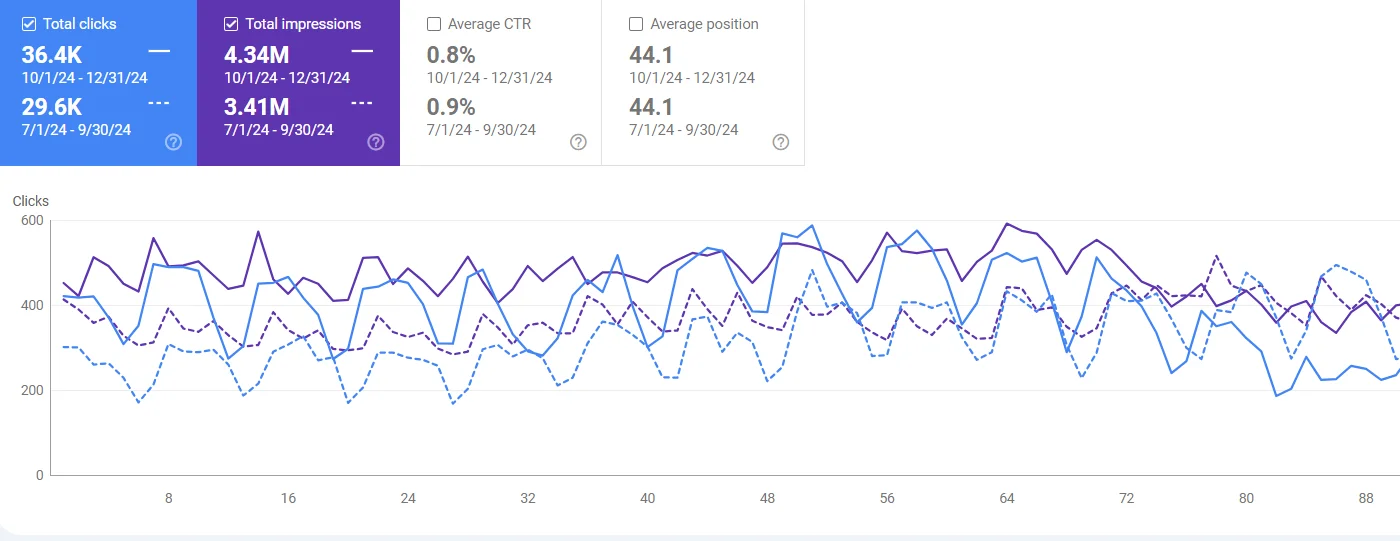
How to Optimize Page Experience and Core Web Vitals
You can follow the following basic practical steps to improve your website’s performance:
1. Optimize Images and Media—Compress images using tools like TinyPNG or WebP, enable lazy loading, and use next-generation formats.
2. Enable Browser Caching – Store frequently used resources locally so pages load faster for returning users.
3. Use a Content Delivery Network (CDN) – A CDN speeds up content delivery by serving it from the nearest server.
4. Minimize JavaScript and CSS – Reduce render-blocking resources by minifying CSS/JS files and loading them asynchronously.
5. Improve Mobile Responsiveness – Use responsive design, test with Google’s Mobile-Friendly Test, and ensure text is readable without zooming.
6. Ensure Secure Browsing (HTTPS) – Install an SSL certificate to encrypt data and boost trust.
7. Avoid Intrusive Pop-Ups – Google penalizes sites with disruptive pop-ups. Use non-intrusive banners instead.
8. Monitor Performance with Google’s Tools –
- Google PageSpeed Insights – Analyzes and suggests improvements.
- Google Search Console (Core Web Vitals Report) – Tracks your performance metrics.
- Lighthouse Audit – Provides actionable page experience insights.
4. Build High-Quality, Authoritative Backlinks
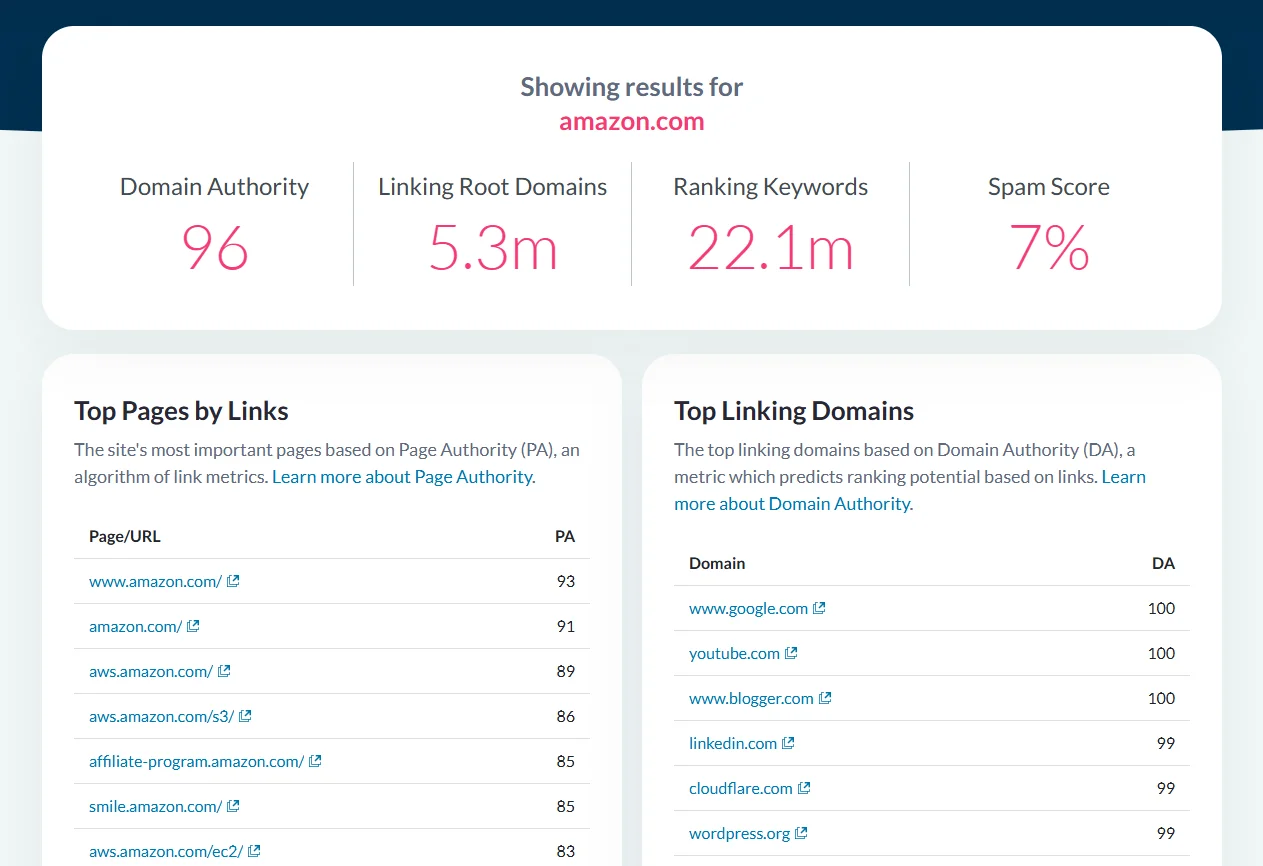
Backlinks still play a crucial role in ranking in Google AI Overview.
However, not all backlinks are created equal. Google prioritizes high-quality, authoritative links from trusted websites over random, low-value links.
Google considers backlinks as a signal that your content is valuable, relevant, and trustworthy. This significantly improves your chances of ranking in organic search results.
Why Do Backlinks Matter?
Google’s AI Overview pulls content from reputable sources that align with its E-E-A-T (Experience, Expertise, Authoritativeness, Trustworthiness) guidelines. One way it determines authority is through backlinks.
Here’s how backlinks impact AI Overview rankings:
- Higher Authority – Links from trusted, industry-leading sites signal credibility and boost your domain authority.
- Increased Visibility – The more high-quality links you earn, the higher your chances of being featured in AI-generated summaries.
- Better Content Validation – Google AI cross-references its sources, and authoritative backlinks reinforce the reliability of your content.
- Improved Organic Rankings – Strong backlinks help increase domain authority (DA), pushing your content higher in search results.
How to Build High-Quality, Authoritative Backlinks
Earning powerful backlinks takes effort, but it’s one of the most effective ways to rank in Google AI Overview. Here are some strategies that work:
1️. Creating Link-Worthy, Data-Driven Content: Websites prefer citing unique statistics and data-driven content, making it a great way to attract organic backlinks. One of the best ways to earn backlinks naturally is by publishing high-value content, such as:
- Original research (case studies, surveys, reports)
- In-depth guides with unique insights
- Infographics that summarize complex data
- Expert roundups with industry leaders
2. Guest Post on Authority Sites: Guest blogging on high-authority industry websites helps you get backlinks from trusted sources, reach a wider audience, and establish your expertise. When pitching guest posts, choose sites relevant to your niche and provide real value—not just promotional content.
3️. Get Featured in HARO (Help a Reporter Out): HARO connects journalists with expert sources. By responding to journalist queries, you can get cited in major publications like Forbes, TechCrunch, or Business Insider.
4. Build Resource Pages and Linkable Assets: Websites look for valuable references that naturally link to your content, increasing your authority. To create comprehensive resources, you should focus on creating pages or linkable assets, such as glossaries, free tools, or templates and downloadable whitepapers
5. Use Broken Link Building: Tools like Ahrefs, SEMrush, and Check My Links help you find broken links in your niche. You should find broken links on industry websites, contact the site owner, and suggest your content as a replacement.
How to Avoid Low-Quality Backlinks
- While creating backlinks for your website, you must avoid spammy or irrelevant backlinks. Such links can harm your rankings instead of helping. It is recommended that you stay away from:
- Buying backlinks from link farms
- Excessive links from low-authority sites
- Links from irrelevant industries
- Duplicate or AI-generated content with no original value
5. Focus on Semantic SEO and Topic Clusters
In 2025, Google AI Overview relies on semantic search and topic clusters to deliver accurate, contextually rich answers.
Unlike traditional keyword-based SEO, which focuses on individual search terms, semantic SEO prioritizes search intent, topic relationships, and structured content.
If you want your content to rank in AI Overview, you need to optimize for semantic relevance, ensuring Google fully understands your content and its connection to related topics.
What is Semantic SEO?
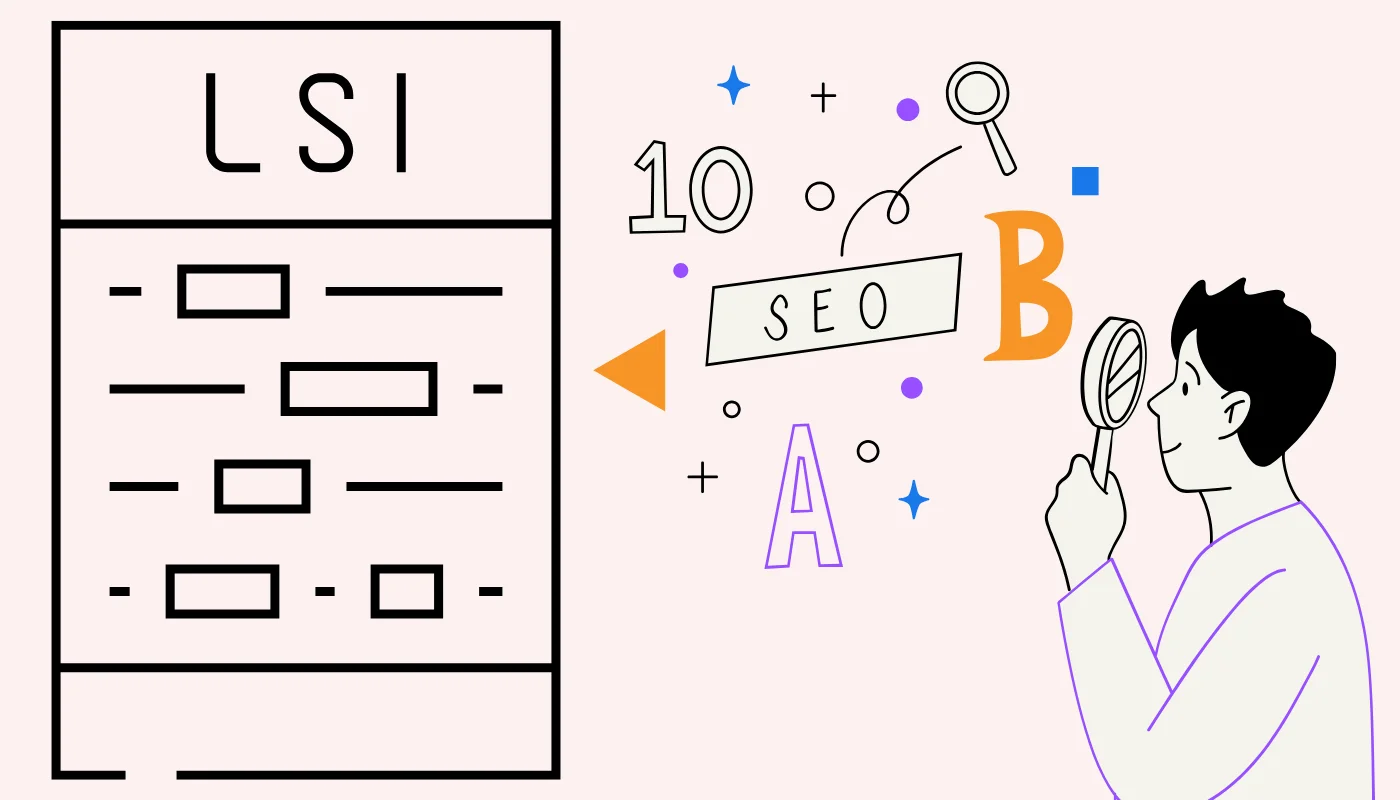
Semantic SEO is an advanced approach to search optimization that focuses on context, meaning, and relationships between words rather than just matching exact keywords.
- Instead of simply identifying what users are searching for, Google aims to understand why they are searching for it.
- AI-driven search models generate results by analyzing natural language processing (NLP), entity relationships, and contextual meaning.
For example, if someone searches “best smartphones for gaming”, Google AI Overview won’t just look for exact keyword matches—it will:
- Recognize related terms like “refresh rate,” “battery life,” and “cooling system.”
- Understand user intent (finding a smartphone with gaming-specific features).
- Generate a contextually rich summary based on the most authoritative sources.
Instead of targeting single keywords, you should optimize entire topics and create interconnected content that answers all aspects of a search query.
What are Topic Clusters?
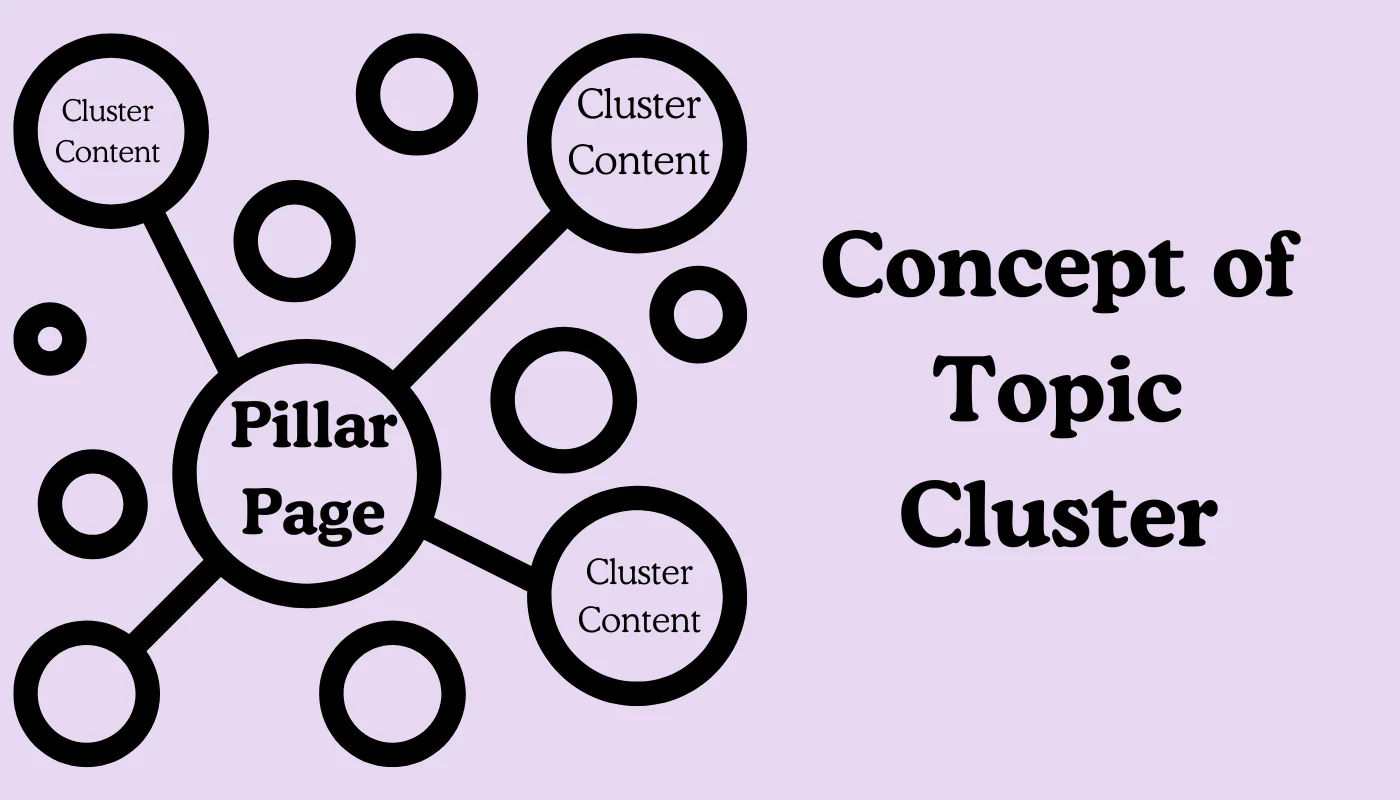
A topic cluster is a content strategy that organizes your website’s content into pillar pages and supporting subtopics. This makes it easier for Google AI Overview to recognize your expertise on a subject.
Pillar Page: A comprehensive, long-form guide that covers a broad topic (e.g., “SEO Best Practices”).
Cluster Content: Supporting blog posts that dive deeper into specific subtopics (e.g., “How to Optimize for Google AI Overview,” “Understanding E-E-A-T,” “How Backlinks Impact AI SEO”).
Internal Links: These links connect pillar content to cluster articles, reinforcing contextual relationships and signaling topic authority to Google.
How to Optimize for Semantic SEO and Topic Clusters
To optimize your content for semantic SEO and topic clusters, follow the following techniques:
1. Identify Core Topics and Related Subtopics
Start by choosing broad, high-value topics relevant to your industry and breaking them into related subtopics.
For example, a WordPress SEO Blog pillar page guide could be an article on “The Ultimate Guide to WordPress SEO.” While the cluster content could be:
- “How to Improve WordPress Site Speed for SEO”
- “Best WordPress SEO Plugins for 2025”
- “Technical SEO Checklist for WordPress”
2️. Use Semantic Keywords and Entities
You should optimize your content for semantic keywords and related entities instead of stuffing your content with exact-match keywords.
For example, if you’re writing about “Google AI Overview Ranking”, include related terms like:
AI-driven search
Google’s NLP model
Machine learning in SEO
Search intent optimization
Topic clustering
You can use tools like Google NLP API, Ahrefs, SEMrush, or Clearscope to find semantically related terms and optimize accordingly.
3️. Structure Content for Readability and AI Crawlers
Google AI Overview prefers well-structured, skimmable content. Ensure your articles include:
- Clear headings (H1, H2, H3, H4) with descriptive keywords
- Short, concise paragraphs for easy readability
- Bullet points & numbered lists for quick scanning
- Internal links to related articles (to reinforce topic clusters)
For example, this article itself follows a structured format optimized for AI comprehension.
FAQ
To rank in Google AI Overview, focus on high-quality content, structured data, Core Web Vitals, authoritative backlinks, and Semantic SEO. Ensure your content aligns with E-E-A-T principles and provides concise, well-structured, and user-focused information.
E-E-A-T (Experience, Expertise, Authoritativeness, Trustworthiness) helps Google determine content quality and credibility. Websites that follow these principles are more likely to rank in Google AI Overview and gain user trust.
Google does not penalize AI-generated content as long as it is unique, valuable, and trustworthy. To improve your ranking chances in AI Overview, ensure AI-assisted content is fact-checked, expert-validated, and optimized for E-E-A-T guidelines.
Google frequently updates its AI algorithms to enhance search accuracy and user experience. Staying updated with Google’s core updates, AI advancements, and ranking factors is crucial for maintaining search visibility and AI Overview rankings.
Conclusion
Ranking in Google AI Overview requires a strategic approach beyond traditional SEO.
By focusing on the practices and strategies mentioned in this article, you can improve your chances of appearing in AI overviews on Google.
As AI-driven search evolves, staying ahead means continuously adapting your strategies to align with Google’s latest updates.
If you liked this article, you can also consider reading:
- How Can a Hosting Provider Affect Your Website’s SEO
- How to Write SEO Titles (+Examples of Good SEO Titles)
- Must Have WordPress SEO Plugins To Improve Your Website’s Ranking
Are you looking for the best WordPress theme to help rank in AI Overview? Grab the Responsive theme now!

